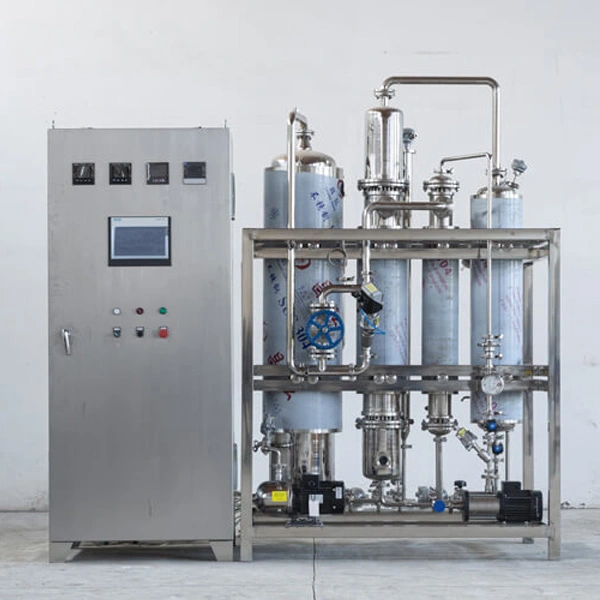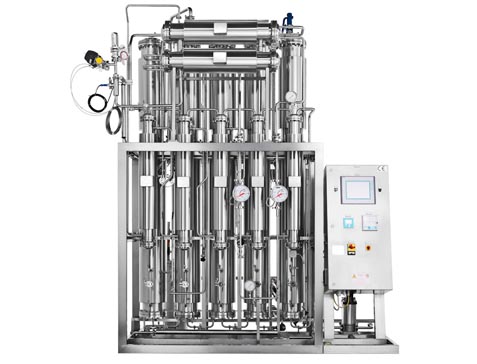Ultrapure water is high-purity water produced by reverse osmosis technology, EDI electric desalting technology and other appropriate supercritical fine technology, which is used to develop ultrapure materials (semiconductor component materials, nano ceramic materials, etc.). The resistivity of water is greater than 18M Ω• cm, or close to the limit value of 18.25M Ω• cm (25 ℃).
The ultra pure water purification system adopts pretreatment, reverse osmosis device, EDI electric desalting, resin purification and post-treatment methods to almost completely remove the conductive medium in the water, and to a very low extent remove the nonfree colloidal substances, gases and organic substances in the water.
The quality of ultra pure water conforms to the first level water standard of China National Laboratory Water Specification GB6682-2008, China National Electronic Ultra pure Water Standard GBT11446.1-1997 and the reagent level pure water standards of ASTM, NCCLS and CAP in the United States.
The ultra pure water system can generally divide the water purification process into four stages: pretreatment (primary purification, including filtration, adsorption, softening and other processes), reverse osmosis device (pre-desalination), EDI electric desalting (deep desalination), post-treatment (including polishing resin purification and other processes), and necessary auxiliary processes (such as degassing membrane, chemical dosing and other processes), Finally, ultra-pure water that meets the industrial standards or special process requirements for product production is produced.
There is such a phenomenon in nature that when a semi-permeable membrane is used to separate pure water from saline water, pure water will permeate into saline water and maintain the corresponding osmotic pressure; If the saline water is applied with a pressure greater than the osmotic pressure, the water in the saline water will permeate in the direction of pure water. This method is called reverse osmosis, and the semi-permeable membrane is called reverse osmosis membrane. The desalination principle of the reverse osmosis device is to force water molecules to penetrate through the reverse osmosis membrane with selective permeation of water molecules by means of pressure.
Electric desalting, called EDI for short, is a process in which mixed ion exchange resin is used to adsorb anions and cations in water supply. At the same time, these adsorbed ions are removed through the anion and cation exchange membrane respectively under the action of DC voltage. In this process, the ion exchange resin is electrically continuously regenerated, so it does not need to be regenerated with acid and alkali. This new technology can replace the traditional ion exchange device to produce ultrapure water with a resistivity of up to 18M Ω • CM.

In the mixed bed, the resin needs to be regenerated with chemicals, and EDI eliminates the treatment of these harmful substances and heavy work. The ultrapure water purification system protects the environment.
Due to each regeneration and water quality change in the mixed bed, the operation process becomes complex, while the EDI water production process is stable and continuous, and the water quality is constant, without complex operation procedures, the operation is greatly simplified.
Compared with the mixed bed with equivalent water treatment capacity, the EDI system has a smaller volume. It adopts a building block structure, which can be flexibly constructed according to the height of the site. Modular design makes EDI easy to maintain during production.
Phone:
E-mail:
Address:
Room 1904, Building 10, No. 218, Jiqingmen Street, Jianye District, Nanjing, Jiangsu, China


